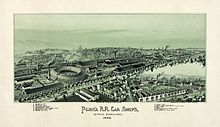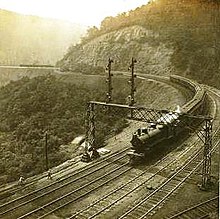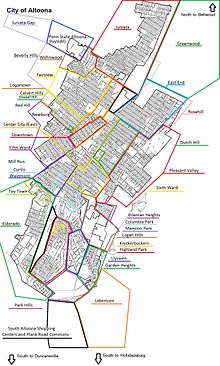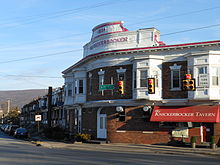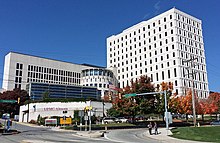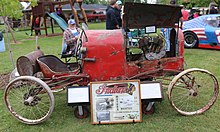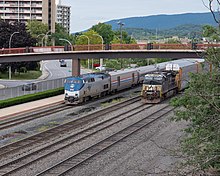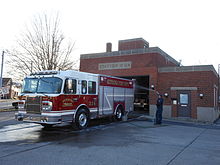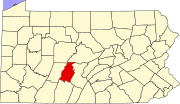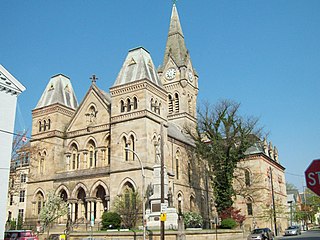
Blair County is a county in the Commonwealth of Pennsylvania. As of the 2020 census, the population was 122,822. Its county seat is Hollidaysburg, and its largest city is Altoona. The county was created on February 26, 1846, from parts of Huntingdon and Bedford counties. The county is part of the Southwest Pennsylvania region of the state.
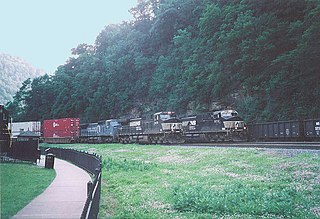
Logan Township is a township in Blair County, Pennsylvania, United States. It is part of the Altoona, PA Metropolitan Statistical Area. It is the most populous township in Blair County, with a population of 12,413 at the 2020 census. Logan Township is home to Horseshoe Curve, a National Historic Landmark.

Williamsburg in Morrisons Cove, is a borough in Blair County, Pennsylvania, United States. The population was 1,241 at the 2020 census. It is part of the Altoona, PA Metropolitan Statistical Area.

Bellefonte is a borough in, and the county seat of, Centre County, Pennsylvania, United States. It is approximately 12 miles northeast of State College and is part of the State College, Pennsylvania metropolitan statistical area. The borough population was 6,187 at the 2010 census. It houses the Centre County Courthouse, located downtown on the diamond. Bellefonte has also been home to five of Pennsylvania's governors, as well as two other governors. All seven are commemorated in a monument located at Talleyrand Park.

State College is a home rule municipality in Centre County, Pennsylvania, United States. It is a college town, dominated economically, culturally, and demographically by the presence of the University Park campus of The Pennsylvania State University.
The Pennsylvania Railroad, legal name The Pennsylvania Railroad Company, also known as the "Pennsy", was an American Class I railroad that was established in 1846 and headquartered in Philadelphia. It was named for the commonwealth in which it was established. At its peak in 1882, the Pennsylvania Railroad was the largest railroad, the largest transportation enterprise, and the largest corporation in the world.

The Horseshoe Curve is a three-track railroad curve on Norfolk Southern Railway's Pittsburgh Line in Blair County, Pennsylvania. The curve is roughly 2,375 feet (700 m) long and 1,300 feet (400 m) in diameter. Completed in 1854 by the Pennsylvania Railroad as a way to reduce the westbound grade to the summit of the Allegheny Mountains, it replaced the time-consuming Allegheny Portage Railroad, which was the only other route across the mountains for large vehicles. The curve was later owned and used by three Pennsylvania Railroad successors: Penn Central, Conrail, and Norfolk Southern.
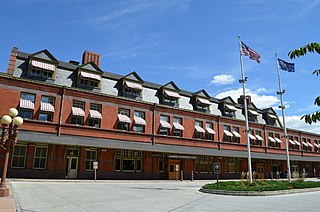
The Harrisburg Transportation Center is a railway station and transportation hub in Harrisburg, Pennsylvania. It is located on the eastern edge of Downtown Harrisburg between the intersections of Aberdeen and Market Streets and 4th and Chestnut Streets.

Penn State Altoona is a commonwealth campus of The Pennsylvania State University located in Logan Township, Pennsylvania. It is one of four full-fledged four year institutions in the Commonwealth Campus network. The full-time student count was 2,577 in 2023.

The Altoona Area School District is a large, urban, public school district based in Altoona, Pennsylvania. The school district encompasses 59.6 square miles (154 km2) which includes all of Altoona, Logan Township and a small portion of Tyrone Township.
Altoona Area High School (AAHS) is the public high school for the Altoona Area School District in Altoona, Pennsylvania. The high school serves the communities of Altoona, Logan Township, and a small portion of Tyrone Township.

The Altoona Transportation Center is an intermodal passenger facility in downtown Altoona, Pennsylvania. It is served by the daily Amtrak Pennsylvanian, Greyhound Lines intercity buses, and AMTRAN local bus service. The station was built in 1986, replacing a temporary station, which had in turn replaced the 1887-built Pennsylvania Railroad station in 1972.

Logansport is a city in and the county seat of Cass County, Indiana, United States. The population was 18,366 at the 2020 census. Logansport is located in northern Indiana at the junction of the Wabash and Eel rivers, northwest of Kokomo.

The Railroaders Memorial Museum (RMM) is a railroad museum in Altoona, Pennsylvania. The museum focuses on the history of railroad workers and railroad communities in central Pennsylvania, particularly Altoona, the Altoona Works, and the greater Pittsburgh area. Since 1998, the museum has been located in the Master Mechanics Building, built by the Pennsylvania Railroad in 1882. The museum also operates a separate museum, visitor center, and observation area at the Horseshoe Curve.
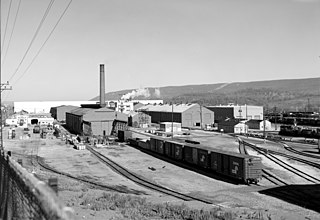
Altoona Works is a large railroad industrial complex in Altoona, Pennsylvania. It was built between 1850 and 1925 by the Pennsylvania Railroad (PRR), to supply the railroad with locomotives, railroad cars and related equipment. For many years, it was the largest railroad shop complex in the world.
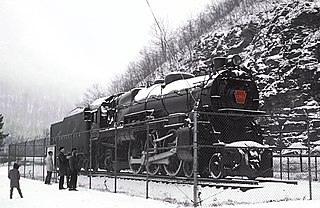
Pennsylvania Railroad 1361 is a 4-6-2 K4 "Pacific" type steam locomotive built in May 1918 by the Pennsylvania Railroad's (PRR) Juniata Shops in Altoona, Pennsylvania. It hauled mainline passenger trains in Pennsylvania and commuter trains in Central New Jersey on the PRR until its retirement from revenue service in 1956. Restored to operating condition for excursion service in 1987, No. 1361 and its only surviving sister locomotive, No. 3750, were designated as the official state steam locomotives by the Pennsylvania General Assembly. In 1988, it was sidelined due to mechanical problems and was currently owned by the Railroaders Memorial Museum (RMM) in Altoona, Pennsylvania, who were currently getting No. 1361 back to operation.
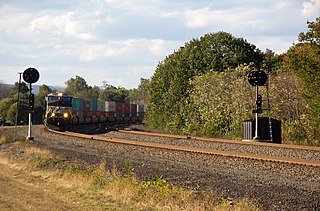
The Pittsburgh Line is the Norfolk Southern Railway's primary east–west artery in its Pittsburgh Division and Harrisburg Division across the U.S. state of Pennsylvania and is part of the Keystone Corridor, Amtrak-Norfolk Southern's combined rail corridor.
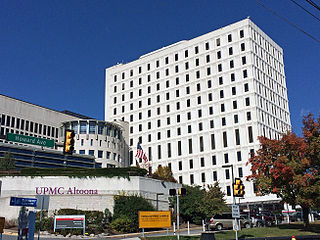
UPMC Altoona, located in downtown Altoona, Pennsylvania, is a 380-bed, non-profit, private community hospital system that contains more than 20 affiliated health care companies and functions as the regional referral center and tertiary hub of the University of Pittsburgh Medical Center (UPMC). Founded in 1883 as to serve the needs of the area and the Pennsylvania Railroad, the hospital was known for most of its history simply as Altoona Hospital. It became part of the Altoona Regional Health System which was created in 2004 by the merger of Altoona Hospital with Bon Secours-Holy Family Hospital, previously Mercy Hospital of Altoona. Today as part of UPMC, it is an Adult Level II trauma center for a 20 county region in central Pennsylvania and is served by 300 physicians and 4,000 care givers that help it to provide a variety of medical services and specialties.

Muleshoe Curve is a curve of track used by the former Pennsylvania Railroad (PRR) near Duncansville, Pennsylvania. Part of a secondary and frequently disused route, the curve is less well known than Horseshoe Curve, located 4.34 mi north.
Eldorado is an unincorporated community and census-designated place (CDP) in Blair County, Pennsylvania, United States. It was first listed as a CDP prior to the 2020 census.






